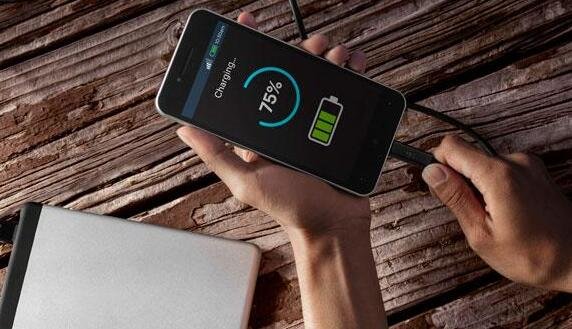
Introduction
In the era of smart phones, there are two ways to extend battery life, one is to directly use a large-capacity battery, and another is to use quick charge technology. Using large-capacity batteries is a easy way but with bulky piece of phones. Here let’s talk about the quick charge. How can you make the phone charge faster?
1 Quick Charge Factors
To realize the quick charging function on the mobile phone, include three elements: Charger, Battery, Charge IC. Adding a point, the charger needs to meet sufficient output current and voltage, because the wiring of the charger has a large parasitic resistance. If requiring a larger charging current, the on-load output voltage of the charger needs to be higher.
Quick charge tech of smartphones is mainly divided into three categories: VOOC flash charge, Qualcomm Quick Charge 2.0, and MediaTek Pump Express Plus.
At present, the mainstream modes of quick charge on the market include three modes:
High Voltage and Constant Current
Low Voltage and High Current
High Voltage and High Current
2 Battery Charging Basics
2.1 Charging Heat
How does the battery charge and solve the heat? The basic condition for battery charging is that the charger voltage must be higher than the battery voltage to generate a charging current and complete the charge transfer process. At present, most of the batteries of mobile phones are single lithium or multiple lithium. Generally, the working voltage of mobile phone batteries is about 3.3V~4.2V. During discharge, the voltage will drop, so the average voltage is about 3.7V-3.8V.
When charging, the electric energy enters the mobile phone and is processed by the step-down circuit in the mobile phone, and then outputs a voltage of about 3.3~4.5V to charge the battery. And this voltage drop process is responsible for the charge management IC module in the mobile phone. It is responsible for converting the current output by the power supply into a current through the battery. In this process, there will be a certain loss, which will be transferred out of heat.
2.2 Phone Batteries
As for phone batteries, Li-Ion and Li-Po expand over there life from over temperature extremes as well as being held at fully charged or too low for too long, this is why on a design point of view, you should NEVER use a phone case that has the battery backup built in as this applies permanent power to the charger input of the device, if there is always 5 volts present the battery will never discharge (some moden battery management can allow charging to completely halt). Something to keep in mind is when a traditional charger for Li-Ion or LiPo gets the battery to 100% (4.20volts) basic physics steps in, the battery doesn’t need the current, but the charger keeps going it pretty much just burns up that current as heat in the battery instead – further damaging it.
2.3 Charging Power
In the case of a certain battery level, power indicates the charging speed, the higher the power, the faster the charging speed.
Power (P) = voltage (V) x current (I)
In theory, increasing the current and voltage can higher the charging power of the battery, but lithium batteries are prone to battery damage or deflagration due to undervoltage or overvoltage. Thus mobile phones must have a complete power circuit. Among them, the charging control IC and the power control IC are the most important.
3 Quick Charge Standard Overview
3.1 Quick Charge Improves
With the time goes by, QC(quick charge) develop rapidly, like Xiaomi’s 120W charging or HUAWEI’s SuperCharge with up to 100W. What a crazy charging world. When I read this, some thoughts come out.
When motorola wasn’t on the list for Qualcomm I just thought “huh, too bad it’s apparently not as noteworthy as LG” and when it was brought up as their own standard “, i would have bet it was turbo charging with a qualcomm adapter”. But alright, they didn’t just call it turbo charging but made their own derived standard, that’s good to know.
3.2 USB PD
As for quick charge standard, USB-PD was a godsend for my charging needs. At this point, I can use the same charger for everything from my Pixel to my tablet to my Switch to my laptop. If only peripherals switched to USB-C already, allowing me toss my micro-USB cables, once and for all. Also, most phones tend to be at least somewhat compatible with USB-C PD even if they don’t support the maximum proprietary solution speed using it. Short : it’s a stupidly over-complicated non standard mess.
3.3 VOOC Charge
Actually, OnePlus’ Dash/Warp Charging seems to be just VOOC/SuperVOOC under the hood, OPPO and OnePlus have been collaborating on it for years now, so I’d expect them to pretty much always be on par, especially with their mostly merger now. I kinda hate that it’s proprietary, but it’s super fast.
3.4 Summary
I support the different quick charging options, even though it is not standardized, not for the charging speed, but a lot of them have fixed or are fixing over charging on cell phones. A lot of them have put in stopgaps where if the phone has a close to full battery, they purposely slow down the electricity sent to the phone.
With so many companies and phones getting release every monthly cycles it is getting out of hands to keep tracks of good and bad chargers.
Get full details of from Quick Charge Standard Development and more useful things from here.



